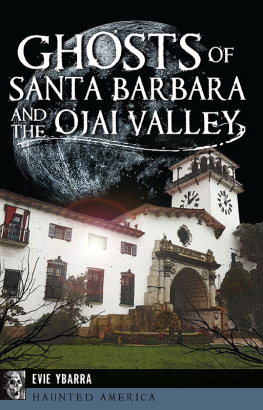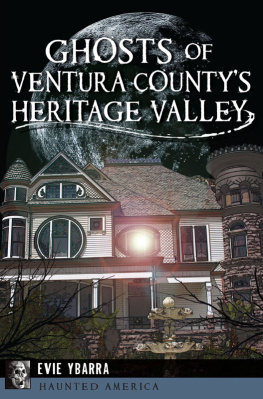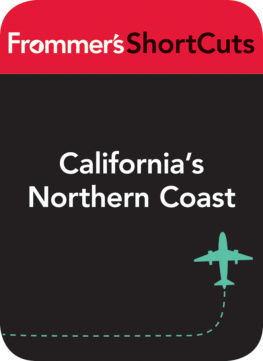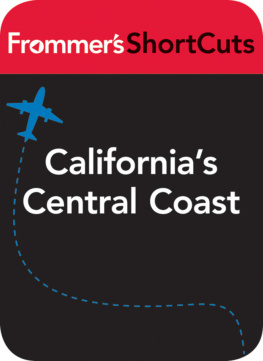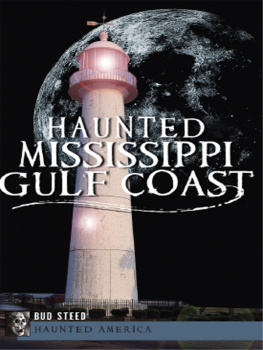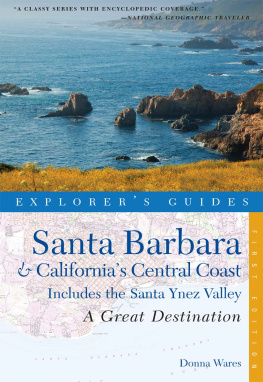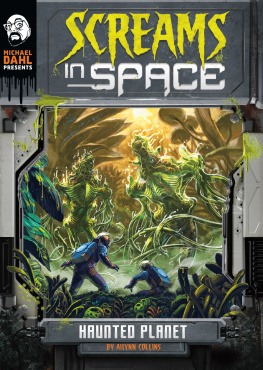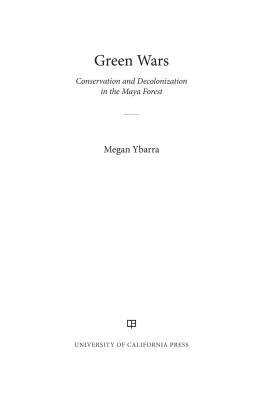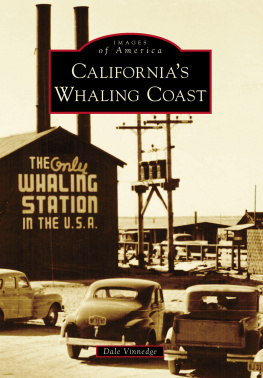Published by Haunted America
A Division of The History Press
Charleston, SC
www.historypress.com
Copyright 2018 by Evie Ybarra
All rights reserved
Front cover image of the Pitkin-Conrow Home courtesy of Laura Dickinson.
Images are courtesy of photographer Laura Dickinson unless otherwise noted.
First published 2018
E-Book edition 2018
ISBN 978.1.43966.547.3
Library of Congress Control Number: 2018945673
Print edition ISBN 978.1.46714.093.5
Notice: The information in this book is true and complete to the best of our knowledge. It is offered without guarantee on the part of the author or The History Press. The author and The History Press disclaim all liability in connection with the use of this book.
All rights reserved. No part of this book may be reproduced or transmitted in any form whatsoever without prior written permission from the publisher except in the case of brief quotations embodied in critical articles and reviews.
FOREWORD
We all probably recollect growing up, sharing experiences and feeling that we connected with some people more than others. Maybe the focus of our experiences was camaraderie or friendships when we felt we had few or commonality in how our families were raised. The focus in my life and Evie Ybarras has had overlap: we grew up together and strove to better ourselves and return to our community to share our learning and our professional careers as educators. We have taught and told stories to our students, the young in elementary schools and the adults we have worked withEvie at the high school level and I at the college and university levels. This is a tradition also kept alive among family and friends. I furthered this form of expression, teaching and learning, when I earned my PhD. The doctorate required qualitative research, ethnography and cultural research obtained through interviewing people sharing their stories about life and their definitions of success. Through their storytelling, I learned even more about the importance and art of understanding the spoken words of others, their true-life experiences, and then recorded and made sense of their realities. I documented these stories and research for others to learn from.
Without individuals sharing their lives and stories, my work would not have been possible; I will always be grateful for their trust and sharing. I continued my own storytelling to others, writing my dissertation and giving class lectures. Evie does her storytelling by writing books and sharing her knowledge at author book signings. The storytelling results in truths about life experiences in neighborhoods like yours and mine, as well as in lives like ours. My professional career as educator, counselor/therapist and writer has taught me and given me tools to work with. These stories can do the same for you, and thats why I agreed to write this foreword. My life as Evies childhood friend and teaching colleague, as well as our ongoing friendship, has proven again that learning is never finished.
Storytelling is something people grow up withsome with more rich tellers and some with more listeners but all tied into tradition. In our upbringing, traditions were shared. There were spooky stories and there were mystical stories, but in the end, they were stories we individuals had to evaluate for ourselves and use as we saw fit, as we continued maneuvering this path called life.
These stories will be interesting and have relevance to a range of people. As an example, many were raised with the idea that our departed (ghosts) visit; that some cultures celebrate ancestors, as in Da de los Muertos; that boogie men are out there trying to get us; or that La Llorona roams the earth searching for her missing children and may kidnap a child or cause other misfortune. These experiences are a few examples of world phenomena, local experiences and her stories.
We all have a story to tell based on our life experiences. Some may question a story or two, not due to the authors skill but possibly due to the fact they have not had that particular experience (for example, La Llorona), but to undermine their truth, merit or possible existence may imply that we know it all and have experienced it all. None of us has, but we have had different experiences that we learned from; when shared, others may learn from them too.
Most everyone will identify with some aspects of these stories through the authors skill in writing, creativity, years of historical research and time spent talking and listening to people. Having told stories and written in this capacity myself (encountering departed individuals or ghosts, including my family members), convincing others of the validity of the story or data collected is only part of the task. The other task is to keep readers interested in the topic and present what has been shared as fact. Doubting such experiences should not deter the reader from deriving what they mayentertainment, confirmation of their experiences or knowledgeas these experiences are not new and authors of great respect have written stories that others have shared with them for years, including Dr. Oscar Lewis. Ms. Evie Ybarra has succeeded once again, being genuine in her writing and respecting and sharing information she gains.
Sharing and storytelling are the things life is made of. After years as a writer and educator, Evie has produced a book that will be a refresher of life experiences we have had as well as a tool we can pick up and learn from. You will be entertained while learning something new.
DR. OFELIA ROMERO-MOTLAGH
Educator, Counselor,
Author, Success as Defined by Mexican-American Women: A Qualitative Study
Professor of Ethnic Studies, Psychology, Storyteller,
Community Observer and Participant
ACKNOWLEDGEMENTS
I wish to thank everyone who shared their favorite stories with me and for trusting me with your information about the supernatural, ghosts and superstitions. Many of you were very encouraging and answered all my questions.
Thank you to Senior Executive Director Nancy Covarrubias Gill of University Communication at California State UniversityChannel Islands, for allowing us to photograph buildings on campus. Many thanks to the Santa Paula Blanchard Library, the E.P. Foster Library and the Santa Barbara Public Library. Thanks to Linda Faris, Kristine Hyatt and Jeanie Allred for your words of encouragement. Thanks to Celestine Arnette; your insights were quite valuable, and I appreciate that very much. Thanks to Andrea Howry, the producer of the Never 30 podcasts for the Ventura County Star; your insight and suggestions are always valued, and thank you for sharing them with me. To Dr. Maria Herrera Sobek, thank you for encouraging me with a past project and for always assisting when asked. Your insight and scholarly contribution for your book Chicano Folklore: A Handbook





